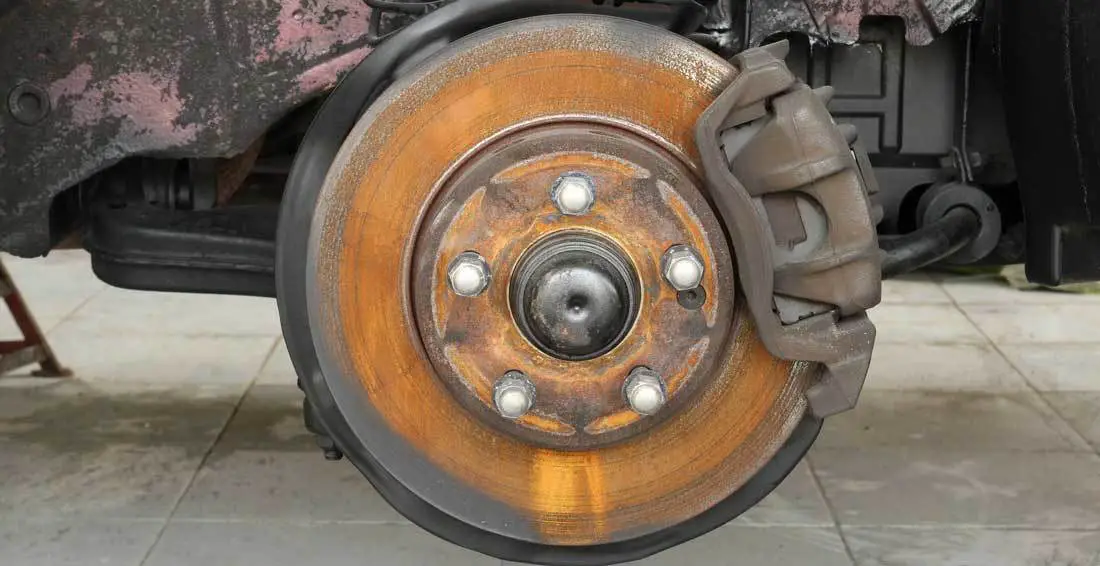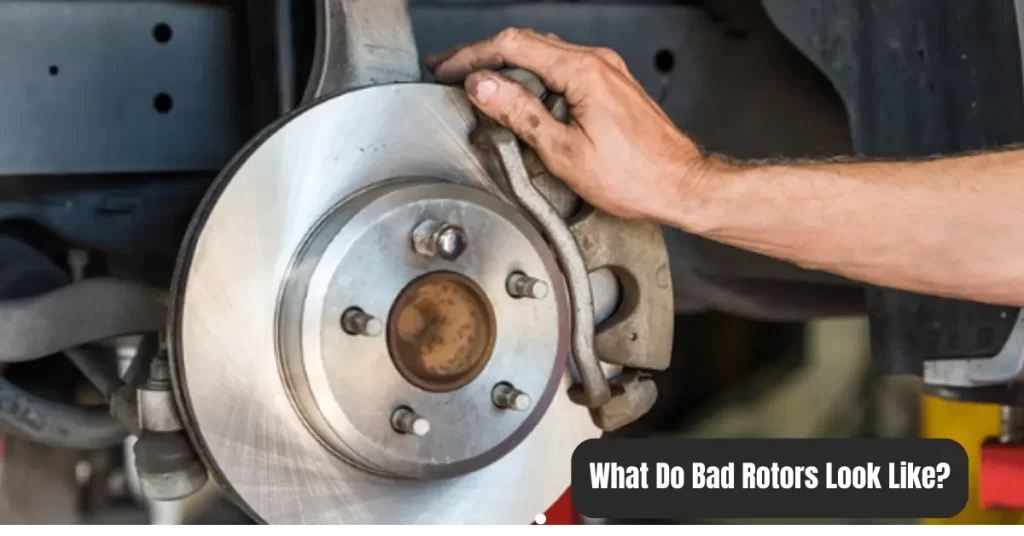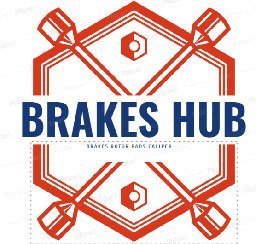How to Tell If Brake Rotors Are Bad [ 5 Signs & Solutions ]
A brake rotor is a key component of a car’s brake system. It works in unison with the brake pads and the caliper to eliminate the motion of a running wheel.
When it comes to driving safety, having properly functioning brakes is paramount. Every year in the United States, there are around 6 million auto accidents; of those, roughly 5% are caused by faulty brakes. This may seem like a small fraction, but it adds up to approximately 300,000 preventable accidents annually. Therefore, it’s of the utmost importance that you check for any signs that your brake rotors may be on the decline.
Now, disc brake rotors are not made to last forever. Over time, they start to get warped or worn and need repair or replacement. But how to tell if brake rotors are bad? What are the signs that bad rotors generally produce? Let’s find out.
Key Takeaways:
| Brake Issue | Symptoms |
|---|---|
| Noisy Brakes | – Squeaking or squealing noises when applying the brakes |
| – Grinding or growling sounds while braking | |
| Vibration from Brakes | – Steering wheel or brake pedal vibration when braking |
| – Vehicle shaking or pulsating during braking | |
| Grooves or Score Marks on the Rotor | – Visible grooves or score marks on the brake rotor surface |
| – Uneven braking or a pulsating sensation | |
| Rotor’s Thickness | – Excessive wear or thinning of the brake rotor |
| – Uneven braking or reduced braking performance | |
| Increased Stopping Distances | – Longer braking distances required to stop the vehicle |
| – Reduced braking power or effectiveness |
How Do Brake Rotors Get Bad?
As mentioned earlier, the function of disc rotors is to stop a running wheel. How do they do that? When you pull the brake, the rotors engage with the brake pads applying friction while spinning with the wheel and breaking the motion of it.
Now, as we all know, friction generates heat. With a long time of use and also with frequent brakes at high speed, excessive heat causes damage to the rotors. Over time, the rotors deteriorate and eventually reach a point when you need to replace them.

How to Know If Brake Rotors Are Bad?
With constant use, your brake rotors get wear and tear and fail to do their job properly. That’s when it becomes your job to inspect, identify, and take necessary actions.
Read below to learn about the most common signs your car shows when the brake rotors go haywire.
1. Noisy Brakes
This is one of the most common bad rotor symptoms. The very first sign you might get from bad rotors is that it may make noise when you pump on the brake. This is one of the most common signs encountered by car owners. You may hear a squeaking or squealing sound – like the sound of nails on the chalkboard, or even worse.
Generally, if the rotor is warped, the surface is not flat enough, it will create a high-pitch squeaking sound. On the other hand, worn rotors are more likely to project a rather scraping sound.
However, the squealing sound might also be produced by worn brake pads, so it’s better to check out which one is the culprit. If you hear a sound that’s more of grinding, you are in danger because the rotors are really in a very bad condition.
So, when you hear such kind of bad sounds, do a check on your brake system.
2. Vibration from Brakes
This is also another common occurrence that bad rotors project. It so happens that when you press on the brake pedal, you suddenly feel excessive pulsation or vibration. The vibration could be felt either at the pedal or from your steering wheel. This problem occurs when a rotor is badly warped or worn.
You could also hear a grinding sound along with the vibration. Take them as a sign that the brake pedal may fail to contact the rotors. So, when you feel it, don’t wait to perform an inspection right away because this is one of the major sign of signs of a bad rotor.
3. Grooves Or Score Marks on the Rotor
This is another major symptom of bad rotors. Exactly! If you see grooves or score marks on your rotor, then it’s not a good sign, either. With frequent contact with the brake pads, rotors tend to develop these kinds of marks.
And these marks generally reduce the capacity of rotors to slow down the wheel. A healthy rotor should have a smooth surface, free from any visibly significant marks or grooves.
Also, if your rotors have rust all over them, it is another issue to pay attention to. Rusted rotors won’t be able to operate smoothly. You might hear squeaky sounds, and your brakes might feel sticky when the rotors are rusted. So, whenever you see a lot of rust over the surface, you should not wait long and do something about it.
4. Rotor’s Thickness
A rotor should have a minimum thickness to run properly. But rotors are built to have the thickness level to be decreased with prolonged use. If the thickness is below the manufacturer’s specifications, you should replace the rotor.
What you can do is open the wheels and detach all the components of the brake system. Then measure the thickness of the rotor with a micrometer and get to know whether it is viable anymore or not.
5. Increased Stopping Distances
So, let’s say you are driving on a highway at a somewhat good speed. Then suddenly, you pull the brake, but the car doesn’t stop immediately. It goes a bit further and slowly ceases to move. This is a dangerous scenario because it risks an accident in an emergency scenario. Bad rotors can cause such a thing, and if you ever inspect something like this, don’t wait to have a quick look down at all the parts.
The Solution
Brake Pad Replacement: If you hear squealing or squeaking sounds, it’s important to determine whether it’s due to worn brake pads or warped rotors. Start by inspecting the brake pads. If they are worn down, replace them with new brake pads. Replacing brake pads and rotors is generally recommended to ensure proper braking performance.
Rotor Resurfacing or Replacement: If you have determined the issue is with the rotors, you have a couple of options. First, you can try resurfacing the rotors. This process involves removing a thin material layer from the rotor’s surface to make it smooth and flat again. However, resurfacing can only be done if the rotors are still within the manufacturer’s specified thickness and do not have excessive wear or damage. If the rotors are beyond resurfacing or have deep grooves, score marks, or rust, it is recommended to replace them.
Rotor Replacement: If your rotors are significantly worn, warped, or damaged, it is best to replace them. When replacing rotors, following the manufacturer’s specifications and choosing high-quality rotors compatible with your vehicle is essential. Installing new rotors will ensure proper braking performance and reduce noise and vibration risk.
Brake System Inspection: While addressing the rotor issue, inspecting the entire brake system is a good idea. Check the brake calipers, brake lines, and brake fluid for any signs of damage or leaks. Ensure that the brake components are properly lubricated and functioning correctly.
Professional Assistance: If you are unsure about inspecting or replacing the rotors yourself, taking your vehicle to a certified mechanic or brake specialist is recommended. They have the expertise and necessary tools to effectively diagnose and resolve brake issues.
Remember, maintaining proper braking performance is crucial for your safety on the road. If you notice any signs of bad rotors or noisy brakes, it is essential to address the issue promptly to prevent further damage and ensure optimal braking performance.
What Do Bad Rotors Look Like?

Grooves or Score Marks: You may notice deep grooves or score marks on the surface of the rotor. These can be caused by worn brake pads or debris caught between the pads and rotor, leading to uneven wear.
Thickness Variation: A bad rotor may have uneven thickness across its surface. You might observe areas that appear thinner or more worn compared to others. This can affect the rotor’s ability to dissipate heat properly and result in brake pulsation or vibration.
Cracks or Fractures: Inspect the rotor for any visible cracks or fractures. Over time, stress and heat can cause the rotor to develop cracks, compromising its structural integrity and effectiveness.
Rust and Corrosion: Excessive rust or corrosion on the rotor’s surface is another sign of poor condition. It can occur due to exposure to moisture or prolonged periods of inactivity, leading to reduced braking performance.
Discoloration: Look for discoloration on the rotor’s surface, particularly blue or black patches. This can indicate excessive heat buildup, often caused by heavy or prolonged braking sessions. Heat discoloration can affect the rotor’s strength and may lead to warping or distortion.
Remember that these visual signs are indicators of potential rotor issues. Suppose you suspect problems with your rotors or experience any brake-related symptoms. In that case, it’s best to have a professional mechanic inspect and evaluate the condition of your braking system for proper diagnosis and necessary repairs.
Watch How to Tell If Brake Rotors Are Bad and Need New Rotors-What To Look For
Frequently Asked Questions
If you’re experiencing vibrations or squeaking sounds when braking, it may be a sign that your brake rotors are bad. Brake rotors are an essential component of your vehicle’s braking system, and when they become worn or damaged, it can compromise your safety on the road. In this FAQ guide, we’ll explore some common signs of bad brake rotors and help you understand when it’s time to have them replaced. Whether you’re a seasoned driver or new to vehicle maintenance, this guide will provide you with valuable insights on how to tell if your brake rotors are bad and what steps you can take to keep your vehicle running smoothly.
Why are my brakes making noise?
Several factors can cause noisy brakes. One common reason is worn brake pads. When the brake pads become thin, a metal wear indicator will come into contact with the rotors, producing a squealing sound. Another possibility is warped rotors. If the surface of the rotors is not flat enough, it can create a high-pitched squeaking sound. Additionally, worn rotors may produce a scraping sound. It’s important to note that other factors could also cause the noise, so it’s recommended to have a professional inspection to determine the exact cause.
How can I fix the noise coming from my brakes?
The solution to the noise depends on the underlying cause. If the noise is due to worn brake pads, replacing them with new ones should resolve the issue. However, if the rotors are warped or significantly worn, they may need to be resurfaced or replaced. Resurfacing involves removing a thin layer from the rotor’s surface to make it smooth and flat again. If the rotors have deep grooves, score marks, or rust, it is generally recommended to replace them. It’s important to consult a professional mechanic to diagnose the exact cause and determine the appropriate solution.
How do I know if my rotors are in bad condition?
Several signs indicate your rotors may be in bad condition. One common indicator is noise, such as squeaking, squealing, or grinding sounds when you apply the brakes. Vibration or pulsation in the brake pedal or steering wheel can mean worn or warped rotors. Looking at the rotors is another way to check their condition. Check the rotor surface for grooves, score marks, or rust. A healthy rotor should have a smooth surface free from significant marks. Additionally, measuring the rotor’s thickness with a micrometer can help determine if it is below the manufacturer’s specifications.
What should I do if my brakes have increased stopping distances?
If you notice that your car takes longer to stop when you apply the brakes, it can be dangerous. Bad rotors can cause this issue. It is recommended to inspect the brake system promptly. Check for worn brake pads, warped or worn rotors, and any other signs of damage or malfunction. If the rotors are found to be the problem, follow the appropriate steps mentioned earlier, such as replacing or resurfacing them. It is crucial to address this issue promptly to ensure your safety on the road.
Can I fix the rotor issues or seek professional help?
While some basic maintenance tasks can be performed by car owners, dealing with brake system issues, especially concerning rotors, is best left to professionals. Brake systems are critical for your safety, and any incorrect repairs or installations can have severe consequences. Certified mechanics or brake specialists have the knowledge, experience, and proper tools to effectively diagnose and resolve rotor-related problems. They can also ensure that all brake system components are inspected and maintained properly. Therefore, it is recommended to seek professional assistance when dealing with brake rotor issues.
Conclusion
Five signs indicate bad brake rotors: thickness variation, cracks or fractures, rust and corrosion, discoloration, and brake-related symptoms. If you suspect any of these issues with your braking system, it’s best to take your car to a professional for proper diagnosis and necessary repairs. Regular inspections should also be performed to ensure the safety and performance of your vehicle.
